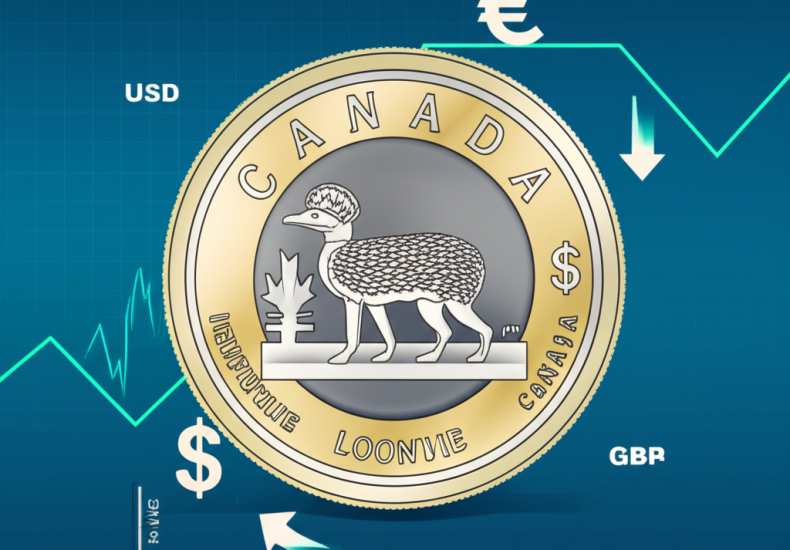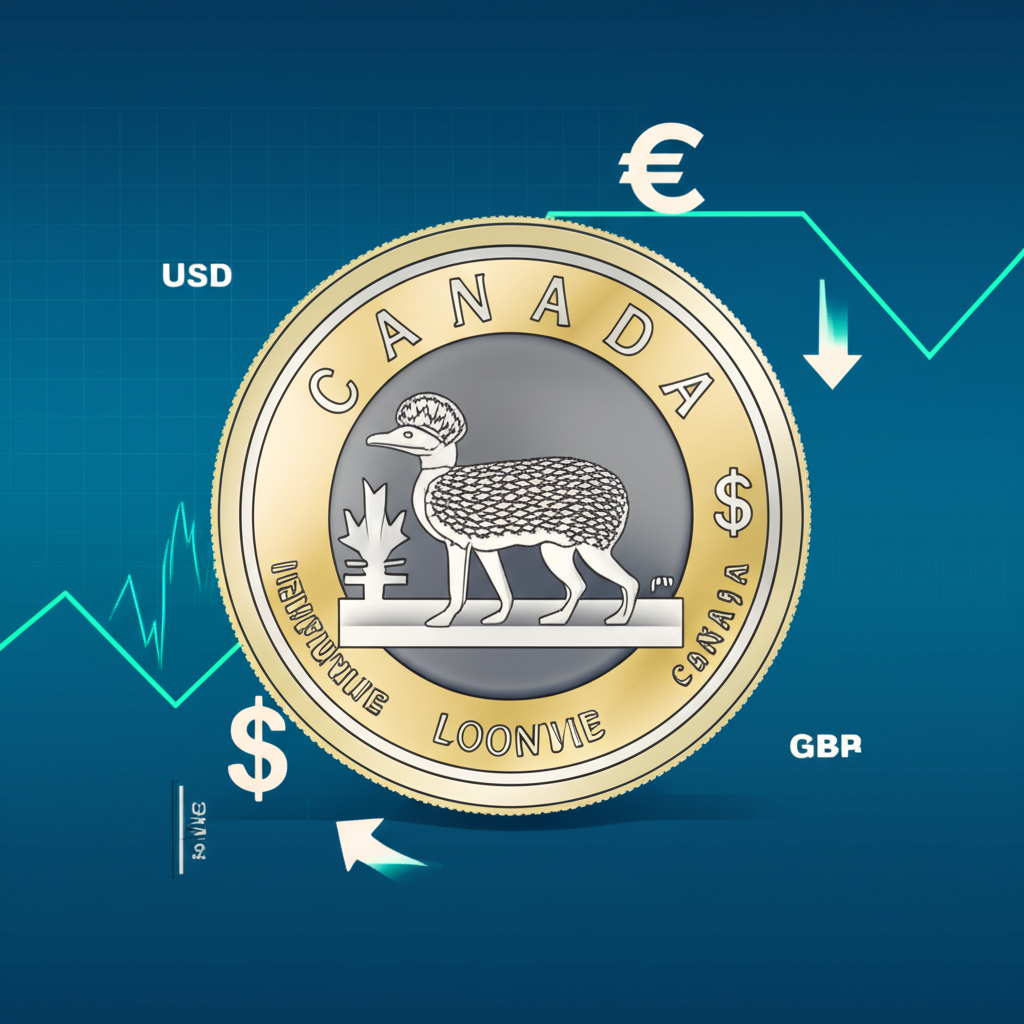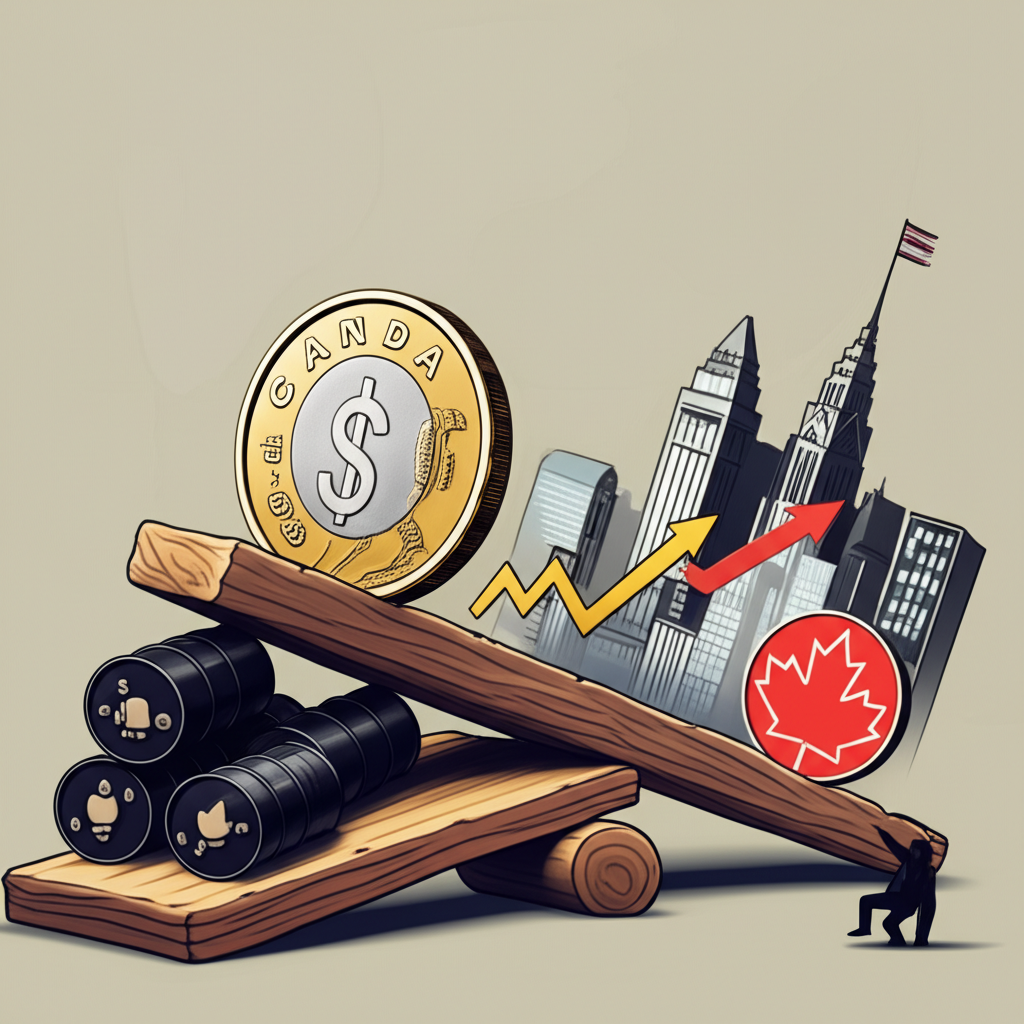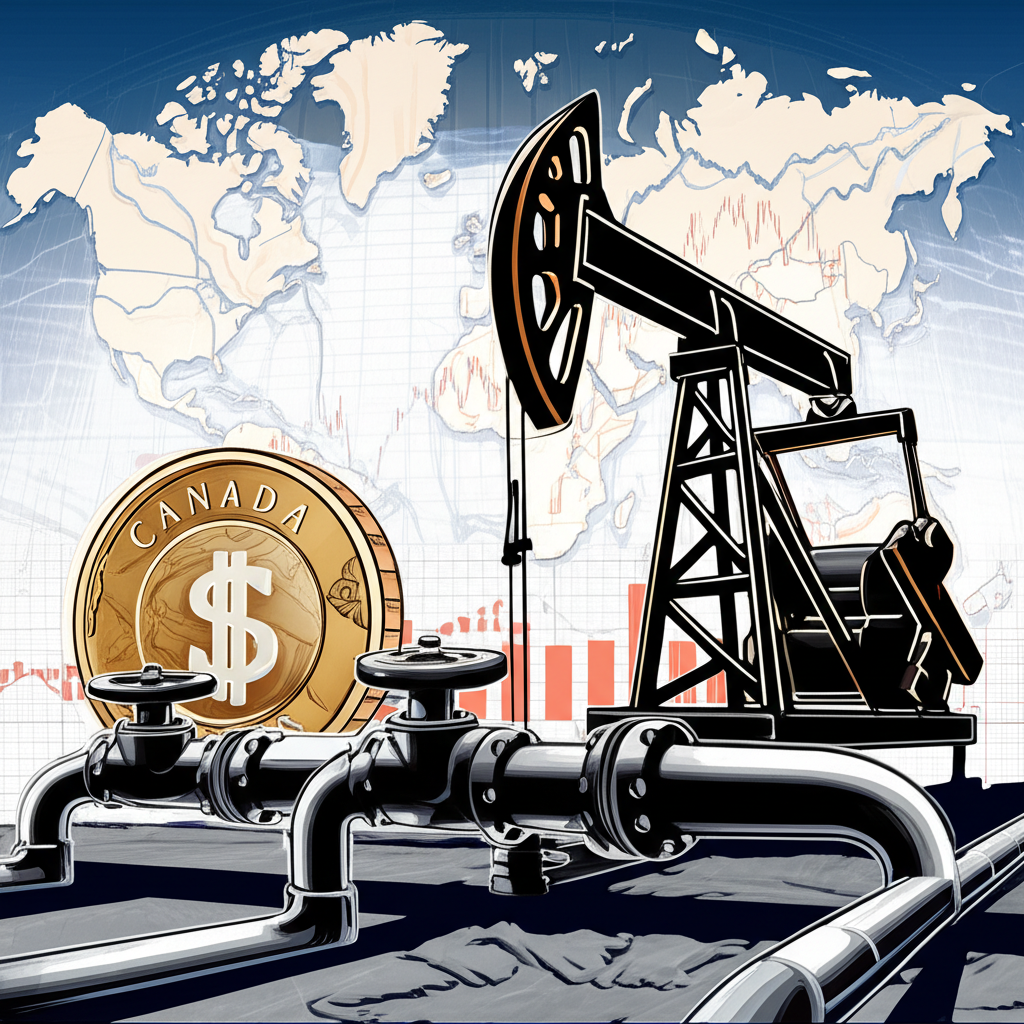
Is the Canadian Dollar Getting Stronger? Analyzing the Loonie’s Momentum and 2025 Outlook
Table of Contents
ToggleIntroduction: Understanding the Canadian Dollar’s Current Momentum

The Canadian Dollar—commonly known as the Loonie—has long stood as a barometer of the nation’s economic pulse, reflecting everything from commodity exports to monetary policy decisions. In recent months, global markets have seen dramatic shifts, with central banks recalibrating interest rates and geopolitical tensions influencing investor behavior. Against this backdrop, the CAD has been navigating a complex environment, prompting widespread interest in whether it’s gaining strength and what lies ahead. This analysis explores the forces shaping the Loonie’s current trajectory, unpacking the economic fundamentals, policy dynamics, and external pressures that determine its value—particularly in relation to the US dollar. For investors, businesses, travelers, and policymakers, understanding these movements is more than academic; it directly impacts financial decisions across borders.
The Canadian Dollar’s Recent Performance: A Snapshot of Strength (or Weakness)

Over the past year, the Canadian dollar has shown resilience amid global uncertainty, though its path has been anything but smooth. While it gained ground in early 2024 on the back of firmer oil prices and speculation of delayed rate cuts by the Bank of Canada, those gains were often offset by stronger-than-expected US economic data. The US labor market, in particular, has remained robust, reinforcing the Federal Reserve’s cautious stance on easing and keeping the US dollar elevated. As a result, the USDCAD pair has fluctuated within a tight range, reflecting a tug-of-war between Canada’s resource-driven recovery and America’s enduring economic momentum. These dynamics underscore a broader theme: the Loonie’s fortunes are increasingly tied not just to domestic conditions, but to how Canada’s economic story compares with that of its southern neighbor and the world at large.
Key Factors Influencing the Canadian Dollar’s Value

The value of the Canadian dollar doesn’t shift in isolation. Instead, it responds to a network of interrelated forces—some deeply rooted in Canada’s economic structure, others driven by global trends. Identifying these drivers is essential for making sense of its movements and anticipating future trends.
Commodity Prices: The Enduring Influence of Oil
Canada’s identity as a resource-rich nation means its currency is inherently sensitive to commodity markets, especially crude oil. As one of the world’s top oil exporters, Canada benefits directly when global prices rise. Higher oil revenues boost government income, strengthen the trade balance, and increase foreign demand for Canadian assets—all of which support the Loonie. For example, supply disruptions in key producing regions or OPEC+ production cuts can send oil prices higher, often leading to a correlated rise in the CAD. Conversely, a global slowdown that dampens energy demand—such as during the 2020 pandemic or fears of a 2023 recession—can weigh heavily on both oil and the dollar. This persistent linkage means that traders and analysts routinely monitor West Texas Intermediate (WTI) and Brent crude prices as leading indicators of CAD performance.
Interest Rate Differentials: BoC vs. The Fed

One of the most powerful levers moving the Canadian dollar is the gap in interest rates between the Bank of Canada (BoC) and the US Federal Reserve. When Canadian rates are higher—or expected to remain higher—than US rates, the Loonie becomes more attractive to yield-seeking investors. This “carry trade” effect can drive capital inflows and strengthen the currency. However, if the Fed maintains tighter policy longer than anticipated—due to persistent US inflation—the US dollar gains an edge, even if Canada’s economy is holding steady. The timing of potential rate cuts in 2024 and 2025 will be especially critical. Markets are closely watching BoC statements for clues about whether Canada will lead or follow the Fed in easing, with even subtle shifts in tone capable of triggering immediate market reactions.
Global Economic Outlook and US Economic Health
Canada’s economy is deeply integrated with global supply chains and international trade, making it vulnerable to shifts in world demand. A broad-based expansion in manufacturing, industrial activity, or consumer spending abroad tends to lift commodity prices and, by extension, the CAD. But no factor weighs more heavily than the performance of the US economy. As Canada’s largest trading partner, accounting for nearly three-quarters of its exports, the health of the American consumer, housing market, and manufacturing sector directly affects Canadian growth. Strong US GDP figures or upbeat retail sales data can boost demand for Canadian goods, supporting employment and investment at home. On the flip side, any signs of a US downturn—such as declining factory orders or rising unemployment—can quickly spill over, weakening the Loonie.
Inflation and Economic Indicators
Domestic data releases serve as vital signals of the Bank of Canada’s next steps. Inflation, in particular, remains a central concern. When inflation runs above the BoC’s 2% target, as it did during the post-pandemic surge, the central bank is more likely to keep rates elevated or even hike further, which supports the dollar. Conversely, if inflation cools too quickly or economic growth stalls, the BoC may pivot to rate cuts, weakening the currency. Beyond inflation, indicators like employment reports, GDP growth, housing starts, and retail sales provide a fuller picture of economic momentum. For instance, a surprise drop in jobs or a contraction in manufacturing activity can shake market confidence and lead to a sell-off in the CAD. These reports are released monthly and are closely tracked by traders worldwide.
Expert Forecasts: Is the Canadian Dollar Expected to Go Up or Down?
Predicting currency movements is never an exact science, but financial institutions use a combination of econometric models, policy analysis, and market sentiment to issue informed projections. While views vary, a general consensus is emerging for the Canadian dollar’s path ahead.
Short-Term Outlook (Next 3-6 Months)
In the near term, the Canadian dollar is expected to remain in a state of flux. The key variables will be the timing of the first rate cut by the BoC and how it compares with the Fed’s trajectory. If Canada cuts rates before the US, the Loonie could weaken due to reduced yield appeal. However, if oil prices remain firm or geopolitical tensions boost energy markets, that could offset downward pressure. Additionally, any unexpected strength in Canadian economic data—such as a rebound in job growth or higher-than-expected inflation—could delay rate cuts and provide short-term support. Traders will also be watching for central bank commentary, with even a single word from BoC Governor Tiff Macklem capable of shifting market expectations.
Long-Term Projections: Will the CAD Strengthen Through 2025?
Looking further out, several factors point to a potential for modest appreciation in the Canadian dollar by 2025. Analysts at major banks suggest that if oil prices stabilize around $80–$90 per barrel and global growth remains moderate, the CAD could strengthen to a range of 1.30–1.33 against the USD. This scenario assumes the Bank of Canada maintains a relatively hawkish stance compared to other G7 central banks, particularly if inflation proves stickier than expected. Additionally, long-term investments in energy infrastructure and the potential for increased oil exports via new pipelines could provide structural support. However, these gains are not guaranteed. A stronger-than-expected US economy, persistent fiscal deficits, or a global flight to safety during times of crisis could keep the US dollar dominant and limit the Loonie’s upside.
CAD vs. USD: Understanding the Dynamics
The USDCAD currency pair is more than just a trading instrument—it’s a reflection of the deep economic symbiosis between two of the world’s most integrated economies. Their exchange rate influences everything from cross-border commerce to investment flows.
Historical CAD to USD Trends
Over the past two decades, the Canadian dollar has moved in cycles, often tied to commodity supercycles and monetary policy divergence. In the mid-2000s, surging oil prices pushed the Loonie above parity with the US dollar—a milestone that lasted for several years. However, after the 2014 oil price crash and again during the pandemic, the CAD fell back into a sub-parity range. Since 2022, it has largely traded between 1.30 and 1.38, reflecting a balance between Canada’s commodity strengths and the US dollar’s safe-haven appeal. These historical patterns remind us that while the Loonie can rise, it rarely sustains parity without a major, sustained boost in energy prices or a significant weakening of the US economy.
What Does a Stronger CAD Mean for US Dollar Holders?
When the Canadian dollar strengthens, the purchasing power of the US dollar declines in Canada. For American tourists, this means higher costs for hotels, dining, and attractions. For US-based businesses importing Canadian lumber, potash, or energy products, a stronger CAD translates into higher input costs, which may be passed on to consumers. On the investment side, a rising Loonie can reduce returns for US investors holding Canadian stocks or bonds unless currency risk is hedged. Conversely, Canadian investors benefit from a stronger dollar when buying US assets, as each CAD buys more USD-denominated securities.
Practical Implications: What a Stronger (or Weaker) CAD Means for You
Currency fluctuations aren’t just numbers on a screen—they have real-world consequences for individuals and organizations.
For Travelers and Tourists
A strong Canadian dollar makes international travel more affordable for Canadians. Whether booking a flight to Europe or a vacation in the Caribbean, a higher-valued CAD stretches further when exchanged. On the other hand, foreign tourists—especially Americans—may find Canada a more expensive destination when the Loonie rises. This can affect tourism revenues in cities like Vancouver, Toronto, and Quebec City, where visitor spending plays a significant role in the local economy. Conversely, a weaker Loonie can boost inbound tourism by making Canada a bargain destination.
For Businesses and Investors
Canadian exporters, such as manufacturers and agricultural firms, typically benefit from a weaker dollar because their products become more competitive abroad. A lower CAD can increase sales volume and margins in international markets. However, companies that rely on imported goods—like retailers or automakers—face higher costs when the Loonie falls, squeezing profit margins. For investors, currency movements affect returns on foreign holdings. A Canadian investor with US stocks may see gains eroded if the USD weakens, while a US investor in Canadian real estate could gain from currency appreciation. Diversification and hedging strategies are often used to manage these risks.
Is it a Good Time to Buy Canadian Dollars?
There’s no universal answer to this question. For someone planning a trip to Canada, buying CAD when the exchange rate is favorable—such as when the US dollar is strong—can save money. For investors, the decision depends on their outlook for oil, interest rates, and global growth. Some may view the current range as a buying opportunity ahead of potential rate differentials or commodity gains, while others may wait for clearer signals. As always, individual circumstances and risk tolerance should guide financial decisions. Consulting a financial advisor can help tailor a strategy that aligns with personal goals.
Potential Catalysts and Risks for the Canadian Dollar
While trends provide a roadmap, unexpected events can rapidly change the currency’s course—either accelerating gains or triggering sharp declines.
Emerging Geopolitical Factors and Trade Policies
Canada’s trade-dependent economy is sensitive to shifts in global policy. New tariffs, trade disputes, or changes in US-Canada relations—such as renegotiations of USMCA provisions—can disrupt export flows and undermine investor confidence. Similarly, geopolitical conflicts in energy-producing regions can boost oil prices and lift the CAD, but they also increase global risk aversion, which often strengthens the US dollar as a safe haven. This dual effect creates a complex environment where the Loonie may rise on commodity gains but fall on capital flight.
Unexpected Economic Shocks
Black swan events—like a global recession, a pandemic, or a major natural disaster in Canada—can upend economic stability. A sharp drop in global demand would hit oil and other exports hard, leading to lower revenues and potential BoC rate cuts. Sudden changes in financial markets, such as a bond yield spike or a stock market crash, could also trigger rapid capital outflows. These scenarios highlight the importance of economic resilience and policy flexibility in maintaining currency stability.
Conclusion: Navigating the Canadian Dollar’s Future
The Canadian dollar’s value is shaped by a dynamic mix of domestic fundamentals and global forces. While the short term may bring continued volatility—driven by central bank decisions, oil prices, and US economic data—the longer-term outlook suggests room for modest gains, especially if commodity markets remain firm and the Bank of Canada maintains a relatively tight policy stance. However, the US dollar’s strength as a global reserve currency and safe-haven asset means the Loonie is unlikely to reach parity without a major shift in economic conditions. For businesses, investors, and travelers, staying informed about key indicators and market developments is essential for making sound financial decisions in an ever-changing landscape.
Is the Canadian dollar expected to go up or down in the near future?
The near-term outlook for the Canadian dollar is characterized by potential volatility. Its direction will largely depend on the Bank of Canada’s upcoming interest rate decisions relative to the US Federal Reserve, as well as short-term fluctuations in commodity prices, especially oil.
What are the main factors that make the Canadian dollar stronger or weaker?
Key factors include:
- Oil Prices: As a major oil exporter, higher oil prices generally strengthen the CAD.
- Interest Rate Differentials: Higher Canadian interest rates relative to the US attract investment, strengthening the CAD.
- Global Economic Outlook: A strong global economy boosts demand for Canadian exports.
- US Economic Health: As Canada’s largest trading partner, a robust US economy supports the CAD.
- Domestic Economic Indicators: Strong GDP growth, low inflation, and positive employment figures often lead to a stronger CAD.
Is it a good time to buy Canadian dollars for travel or investment?
Whether it’s a good time to buy CAD depends on your specific financial goals and risk tolerance. For travelers, buying when the CAD is weaker relative to your home currency can offer better value. For investors, it requires a deeper analysis of market forecasts and personal investment strategy. It’s advisable to consult with a financial advisor for personalized guidance.
How much is $100 US in Canadian dollars today, and how has that changed recently?
The exact conversion rate for $100 US into Canadian dollars fluctuates daily based on market conditions. You would need to check a live currency converter or a financial news site for the precise current rate. Recently, the CAD has seen periods of both appreciation and depreciation against the USD, influenced by varying economic data and central bank policies in both countries.
Will the Canadian dollar get stronger than the US dollar by 2025?
While some forecasts suggest a potential for moderate CAD strengthening through 2025, it is generally not expected to surpass the US dollar in value. The US dollar often benefits from its status as a global reserve currency and a safe haven, making it challenging for the CAD to consistently trade above parity.
What is the current Canada Dollar rate prediction for this week, and what influences it?
Short-term predictions for the Canadian dollar rate this week are influenced by immediate economic news, such as inflation reports, employment data, and any statements from the Bank of Canada or the US Federal Reserve. Geopolitical developments and shifts in global commodity prices, especially oil, can also cause rapid intraday movements. For the most up-to-date predictions, financial news outlets and currency analysis platforms are the best sources.
How do oil prices and the Bank of Canada’s interest rates specifically affect the CAD’s value?
Oil prices directly impact the CAD because Canada is a major oil exporter. Higher prices mean more export revenue, increasing demand for the CAD. The Bank of Canada’s interest rates affect the CAD by influencing capital flows. Higher interest rates (or the expectation of them) make Canadian assets more attractive to foreign investors, thus increasing demand for the CAD.
Is the Canadian dollar stronger than the US dollar currently, and why?
No, the Canadian dollar is currently not stronger than the US dollar. The US dollar has maintained its strength due to a relatively robust US economy, its role as a global reserve currency, and its safe-haven appeal during times of global uncertainty. While the CAD can appreciate against the USD, it typically trades below parity.
What are the key economic indicators that signal Canadian dollar uncertainty or strength?
Indicators signaling CAD strength include strong GDP growth, low unemployment, rising inflation (prompting rate hikes), and high commodity prices. Conversely, indicators like slowing economic growth, rising unemployment, falling inflation (leading to rate cuts), and declining commodity prices can signal uncertainty or weakness for the CAD. The Trading Economics website offers a comprehensive list of Canadian economic indicators.
How might global trade tariffs or geopolitical events impact the Canadian dollar’s trajectory?
Global trade tariffs can negatively impact the Canadian dollar by disrupting Canada’s export markets, particularly if they involve major trading partners like the US. This reduces demand for Canadian goods and, consequently, the CAD. Geopolitical events, such as international conflicts or political instability, often lead to increased risk aversion globally. This typically prompts investors to flock to safe-haven assets like the US dollar, causing the CAD to weaken.
You may also like
Calendar
| 一 | 二 | 三 | 四 | 五 | 六 | 日 |
|---|---|---|---|---|---|---|
| 1 | 2 | 3 | 4 | 5 | 6 | 7 |
| 8 | 9 | 10 | 11 | 12 | 13 | 14 |
| 15 | 16 | 17 | 18 | 19 | 20 | 21 |
| 22 | 23 | 24 | 25 | 26 | 27 | 28 |
| 29 | 30 | 31 | ||||
發佈留言
很抱歉,必須登入網站才能發佈留言。